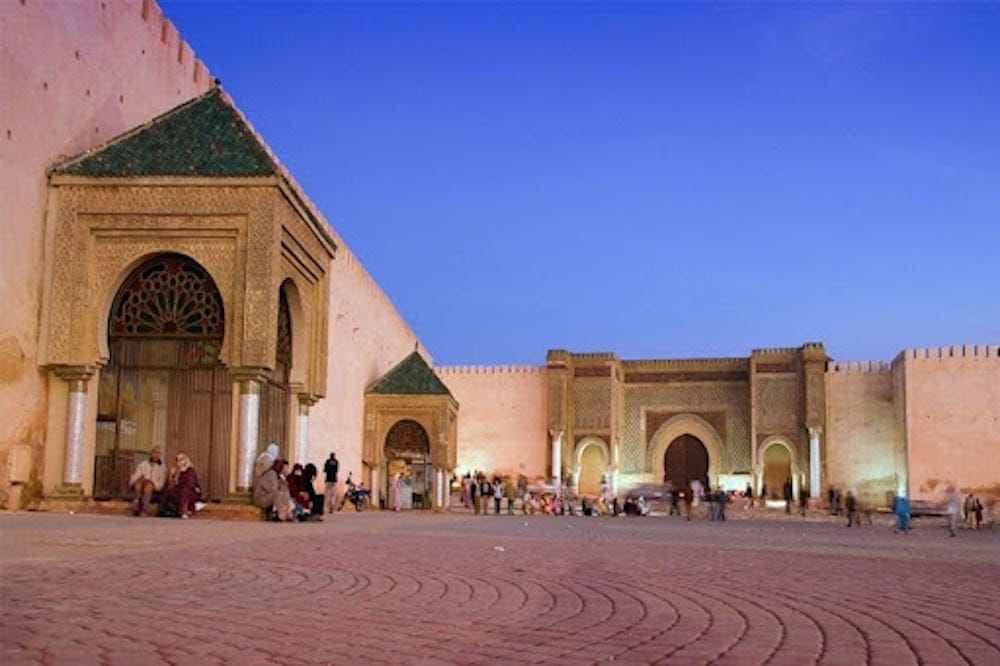Meknes can compete with Marrakesh, Rabat, and Fez because it is known as the Imperial City and has a historic medina that has been recognized by UNESCO, but it finds it difficult to draw the same kind of devoted tourists. But the curious tourist will find much to interest them in this picturesque hilltop city, from elaborate gates to magnificent museums and mausoleums.
The old section of Meknes, known as Medina, and the modern part, known as Ville Nouvelle, are two separate areas that are less than three miles apart but have quite different vibes. The city’s ancient landmarks and desired romantic flavor are located in the medina, whereas large homes, contemporary vehicles, and branded takeaways are found in the new city.
What are medina’s highlights?
In the medina, you may find anything from specialty souks selling crafts and vast quantities of linens to fake sneakers, trinkets, and carpets. The 12-century Grand Mosque, which is off-limits to non-Muslims, serves as the center of the city. Additionally, there are teahouses hidden away in courtyards, elaborate raids, and the occasional hard-working donkey that adds to the ambiance. 5 days desert tour from marrakech.
When you look up, you’ll notice portions of recently rebuilt roofs with carved cedar wood panels that provide dappled shade along some of the covered alleyways.
If you want to do additional shopping, go to the market that is located between the old Mellah and the medina (the old Jewish quarter, worth a peek for its distinctive architecture). Along with commonplace products like children’s toys, kitchen appliances, and stacks of undergarments, there are also bowls of olives perilously heaped, cartloads of dried grains, and cartloads of red chilies.
Sounds intriguing, where do I begin?
The Place el-Hedim is where most visitors start their exploration of the medina; picture a scaled-down version of Marrakesh’s Jemaa el Fna, and you’ll get the idea. Take a mint tea as Moroccan pop music is being played loudly by competing merchants, and then enter the medina through the entrance next to the Dar Jamai Museum.
What are the additional main draws?
Visitors flocked in droves to Bab el-Mansour, and with good cause. The gate, which was finished in 1732, is stunning not only because of its grandeur but also because of its original green and white zellij tiles, marble columns, and Quranic inscriptions along the top.
For the interiors alone, the Dar Jamai Museum is worth the few dirhams it costs to enter. What was formerly a late nineteenth-century palace now exhibits not only ornate chambers and doorways but also traditional crafts including brass work, jewelry, and ceramics. The structure is decorated with an eclectic collection, but make sure not to overlook the magnificent tile work or the first floor’s ornate dome ceiling.
The Mausoleum of Moulay Ismail, the elaborate tomb of the person who gave Meknes its imperial position, is one of the city’s busiest locations. Non-Muslims can visit the mausoleum to enjoy the architecture (women, bring a hijab), but they cannot approach the tomb directly. It can get very crowded there, so get there early.
A mile or two southeast of the medina, Heri es-Souani, and Agdal Basin make for a fantastic duo.
Heri es-Souani, commonly known as the Royal Granaries, was built to house 12,000 horses at once in addition to storing an excessive amount of grain. Even if the roof fell in the eighteenth century due to an earthquake, Moulay Ismail’s engineering achievement is still apparent when considering the size of the building.
Once the granaries have sufficiently impressed you, proceed to Agdal Basin, a sizable reservoir lake that is partially bordered by the walls. 4 days tour from Fes to Merzoug desert.
Exist any worthwhile day trips?
The UNESCO World Heritage Site at Volubilis, which is only 40 minute’s drive from Meknes and has the remnants of a Roman city from the third century BC, must be mentioned in any tour to Meknes. The city, which served as the westernmost point of the Roman Empire, must have seemed like the end of the world. Wander along the paved pathways, weave in and out of the structures, look for olive presses, and look for the intricate mosaics that are still exposed to the weather yet are still easily visible.
A visit to Moulay Idriss, a picturesque white-washed town with stunning views of the valley and the surrounding countryside, is usually combined with a trip to Volubilis. Moulay Idriss is home to the mausoleum of the same-named Arab emperor.
Is it simple to navigate?
Simply said, absolutely. Naturally, walking is the ideal way to explore the medina. Knowing the numerous gates, or bab in Arabic, which pierce the walls at regular intervals is a handy way to move around the ancient town, which is still surrounded by towering city walls. There are also lots of local buses, albeit busy, as well as petits and grands taxis for short and large distances, respectively.
How much time should I devote to Meknes?
You can definitely enjoy Meknes in a day, including a journey to Volubilis, but for a broader experience, think about using Meknes as a base to explore the region for longer. From the major towns of Fez, Marrakesh, Tangier, Casablanca, Rabat, and more, it is easily accessible by bus and train.


